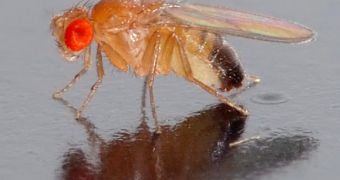An international group of researchers is currently working towards gaining a deeper understanding of the factors that lead to inherited intellectual disability. In order to find out more about this, they are using genetically-altered fruit flies as proxies.
In an investigation conducted on several Iranian families, geneticists found that mutations on a gene called ZC3H14 can lead to intellectual disability (ID). Until recently, ID was called mental retardation.
Now, using the altered fruit flies, researchers are analyzing the gene dNab2. In the small insects, mutations of this gene cause the flies to be unable to properly hold their wings on their bodies. At the same time, they cannot readily climb or fly.
One of the reasons why this happens, investigators believe, is that the protein the Nab2/ZC3H14 gene codes for is part of a group of molecules that binds RNA. This process regulates the function of brain cells called neurons, which may explain the connection with ID.
Interestingly, one of the proteins in the same group has been linked in past studies with the development of fragile X syndrome. This is the most commonly known single-gene cause of autism.
Researchers publish details of their work in this week's advanced online issue of the esteemed journal Proceedings of the National Academy of Sciences (PNAS). The paper shows how neurons contribute to regulating genes, by modifying the length of the RNA segments they contain.
Experts from the Emory University School of Medicine in Atlanta, the US, the Max Planck Institute for Molecular Genetics, in Berlin, Germany, and the University of Social Welfare and Rehabilitation Sciences, in Tehran, Iran, worked together to study the fruit flies, Science Blog reports.
“It has been more straightforward to find mutations that cause ID along the X chromosome, because they show up easily in boys – and they don’t need to have inherit the defective genes from both parents,” explains Emory assistant professor of cell biology Ken Moberg, PhD.
“Studying [the Iranian] families with blood-related parents is a way to explore new ground and learn more about genes on other chromosomes that can be linked to ID,” he adds, saying that members in these families marry their cousins.
“Although mice may better reflect the human situation, exploring the function of Nab2 in flies first allowed us to be quicker and nimbler in designing experiments,” Moberg concludes.

 14 DAY TRIAL //
14 DAY TRIAL //